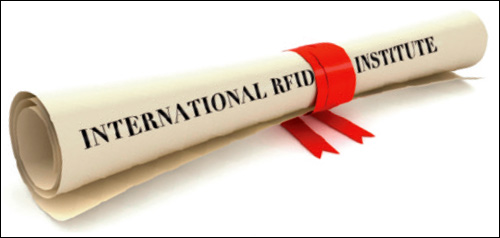Oct 27, 2014When you are a giant—especially a giant with a reputation for changing entire industries—your mere footsteps can effect change. On Sept. 9, Apple announced Apple Pay, a Near Field Communication mobile payment solution that takes advantage of fingerprint technology in new iPhones. Within three weeks, eBay announced it would spin off its PayPal unit. PayPal is the leader in online payments and is pushing into mobile payments. But for months, eBay had been rebuffing investor Carl Icahn's demand that it spin off PayPal. PayPal has also begun to talk about embracing NFC for payments.
Square, a startup that provides a peripheral device and application that lets anyone process credit cards on an iPhone, announced it planned to allow merchants to accept Apple Pay transactions. But two major U.S. store chains—Wal-Mart and Best Buy—announced that they would not support Apple Pay. The two are backing CurrentC, an NFC-based mobile payment solution being developed by a network of retail store chains called Merchant Current Exchange (MCX).
Apple certainly has a track record of disrupting industries. It transformed the way music is purchased and distributed. Prior to the launch of iTunes and the iPod, most people purchased their music on CD. But CD sales have been falling steadily, and according to Billboard, more people will purchase albums via download than on CD for the first time this year.
Apple has also had an impact on the way books are purchased, though its influence has not been as great as that of Amazon, which first disrupted the publishing industry with online book sales. But is it a given that Apple will transform the way people pay for goods? Hardly. There are numerous hurdles Apple will need to overcome before Apple Pay is widely embraced.
1. Europe and Asia are already embracing mobile payments.
Visa and other credit card companies have been working with Vodafone, Orange, Telefonica and other telecommunications companies to offer mobile payments across Europe. Several of these use NFC solutions, but others do not. In Asia, RFID payment systems are used in mass-transit systems and have spread to convenience stores and other shops. They tend to use older RFID technology that is not compatible with NFC.
2. Retailers want to control their own network.
Retailers proposed the idea of CurrentC (a play on "currency"), because they would like to control their own network and avoid having to pay additional fees. While Apple is not looking to take any cut of transactions made via Apple Pay, retailers might still prefer to use a network they control. This would enable them to ensure the privacy of their customers and the security of the network.
The initial founders of CurrentC were 7-Eleven, Alon Brands, Best Buy, CVS Pharmacy, Darden Restaurants, HMSHost, Hy-Vee, Lowe's Home Improvement, Publix Super Markets, Sears, Shell Oil, Sunoco, Target and Walmart, which together account for more than a trillion dollars in sales. The network has launched in beta mode, and additional retailers have signed on, including Bed Bath & Beyond, Circle K, Dick's Sporting Goods, Dunkin' Brands Group, Dillard's, Gap, Kohl's, Old Navy, Sears, Sheetz and ShopRite.
Very few of these retailers have installed NFC point-of-sale readers, so it remains to be seen whether they will stick with CurrentC or make the switch to Apple Pay, if it catches on.
3. PayPal could be a major competitor.
The goal of spinning off PayPal as a separate company is to give it greater flexibility to innovate and respond to market conditions. As soon as PayPal was spun off, eBay appointed Dan Schulman, former president of the payment card network at American Express, as CEO. Earlier this year, PayPal introduced One Touch, a mobile payment feature that allows a shopper with a PayPal account linked to his or her mobile phone to send money to family or friends or pay for goods with a single touch.
One Touch does not have an NFC component, but PayPal's president, David Marcus, said earlier this year that NFC was a technology PayPal was watching carefully. The company could easily create an app that works with the NFC devices in both the new iPhones and with Android phones, giving it a cross-platform solution both Apple and Android phones lack.
4. iPhones with Apple Pay will make up only a small part of the market.
Consumers will not be able to use Apple Pay with older iPhones, though they will be able to use it with an Apple Watch in conjunction with an iPhone 5, 5S or 5c. Still, that will be only a small fraction of the total number of smartphone users. Will retailers adopt a solution that requires new POS terminals if only a fraction of their shoppers can use it? Probably not—at least, not right away.
So Apple has the challenge of making Apple Pay common enough that retailers embrace it. Certainly, users of older iPhones will upgrade their phones eventually, and become eligible to use Apple Pay. But that could take years, and in the meantime, other solutions could take hold.
Google Wallet failed to catch on when it launched in 2011, because so few mobile phones had NFC payment capabilities. That is changing, and Google Wallet could reemerge as a competitor for Apple Pay, further complicating the mobile payments landscape.
Despite these challenges, Apple Pay has some advantages. Apple has created a whole product, rather than simply a piece of a product. It signed up banks, credit card companies and retailers to support Apple Pay, which means those who purchase an iPhone 6 or 6+ will be able to use Apple Pay immediately at some 210,000 retail and restaurant locations. That's not many compared with the total number of retail locations in the United States, but if those stores see customers using Apple Pay, it's likely other retailers will jump on board.
Bottom line: Apple Pay is no sure thing to catch on, but don't bet against Apple.
Apple Pay and Privacy
The addition of Near Field Communication to Apple's latest devices could mark a profound change in consumer views on radio frequency identification technologies. Until now, consumers have seen RFID mainly as something used by retailers to get more information on their customers. NFC has been in some phones for several years, but its addition to iPhones will greatly increase the number of phones with the technology. It's hard to imagine any smartphone manufacturer will not include NFC in future models.
The use of NFC for payments will give U.S. consumers their first real experience with the technology. They will see that the read range is short, so transactions can't be initiated unless the phone is within a few inches of the payment terminal. That should reduce consumer fears that they can be tracked with RFID technology.
The convenience of NFC payments and the security of Apple Pay should also reassure consumers about the technology. Apple Pay does not transmit a user's credit card information wirelessly, or even store it on the phone. Instead, Apple Pay stores a "token," a random serial number that the bank associates with the credit card. Stealing the token will not enable someone to make an unauthorized payment.
Of course, there is always the danger the Apple engineers and software designers overlooked some security loopholes that hackers will exploit. A widespread breach of Apple Pay's security could cause consumers to abandon NFC as a viable form of mobile payment. Makers of NFC technology are praying that doesn't happen.


